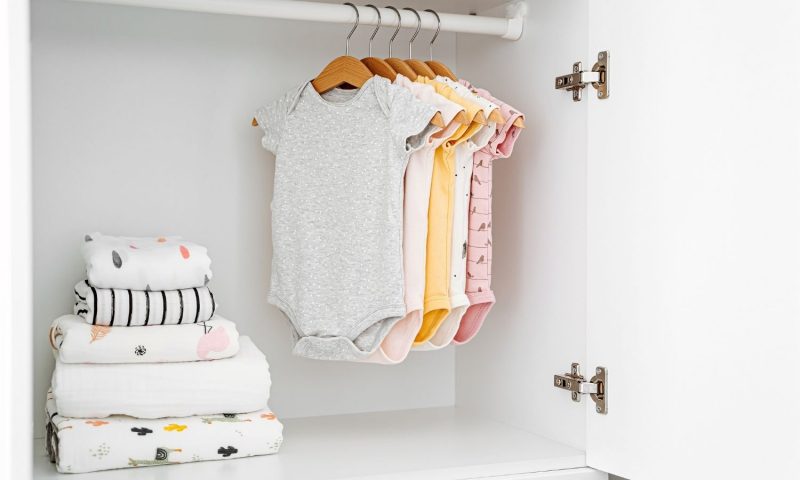When there’s a baby on the way, thoughts turn to buying supplies. Whether you or a friend is expecting, here are questions to ask before buying baby clothes.
News that a baby is on way the sets in motion a cascade of events and tasks: among them, choosing clothing. Expectant parents and their friends should know questions to ask before buying baby clothes.
Safety
Beware of adorable outfits for infants decorated with bows, buttons, or pom-poms. If an infant pulls these items off a garment, the first place they’ll put it is in their mouth. These items create choking hazards. Avoid drawstrings as well, as babies can get themselves tangled up in them, risking strangulation.
The Consumer Product Safety Commission has issued rules that apply to children’s sleepwear intended for babies aged nine to 14 months. Newborn sleepwear is excluded. Infants can’t move enough to expose themselves to flames, but that doesn’t necessarily mean they’re safe. Sleepwear and clothing should fit snugly. The label will tell you whether the garment is treated with flame retardant. Many parents are wary of toxicity in flame retardants, and prefer to select sleepwear with a snug fit.
Comfort
Newborns sleep as much as 20 hours a day, but they won’t sleep peacefully if they’re dressed in something scratchy, fussy, or unbreathable. Select natural, comfortable, soft fabrics. Ask yourself if you would sleep in a garment made of this fabric. If not, don’t pick it for the baby.
Size
Newborns grow fast. Most infant clothes are labelled by age, but may also have a weight guide for sizing. When in doubt, go by weight. Although you wouldn’t want to dress your baby in something that’s too baggy, keep in mind that whatever you’re buying, the child will outgrow it in a few months if not weeks.
Practicality
Another question to ask when buying baby clothes is about practicality. Those little squirmy worms don’t like putting clothes on over their heads. Choose items that snap in front and have wider necks for ease of dressing. For infants, choose onesies or sleep bags that are easy to get on and off, and that have snap access for diaper changes.
Baby clothes should be washable, and stick to the current season (or the season where the due date lands). By the time the weather changes dramatically, so will the baby’s size.
It’s impractical to buy expensive clothing for a newborn. By the time you get it out of the box, the baby may have outgrown it.
Booties or Shoes
Infants don’t need shoes—booties or socks protect their feet and keep them warm. As babies begin to learn to walk, barefoot is best. However, when taking the baby for a stroll, appropriate footwear that keeps them warm and dry is necessary. Deciding when a baby can wear shoes is usually more a style, comfort, and protection decision. Cute little sneakers and sandals come along when the child can walk (with parental supervision) and needs protection from toe stubs or hazards in the yard or on the sidewalk.
